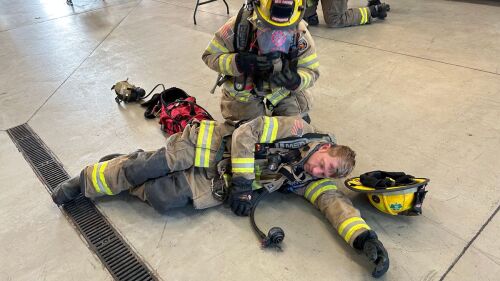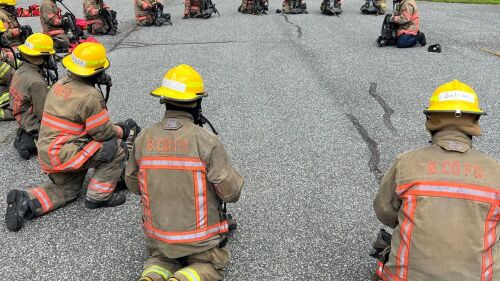The Occupational Safety and Health Administration (OSHA) recently announced plans to update the outdated and scope-limited Fire Brigades Standard, 29 CFR 1910.156. The proposed new standard will be titled “Emergency Response” and aims to include emergency responders, including fire departments, EMS agencies, and technical search and rescue teams. It will also govern responders who work other jobs in commercial or industrial settings but are activated as part of a Workplace Emergency Response Team when an incident occurs in the facility.
OSHA has published a notice of proposed rulemaking (NPRM) and is accepting comments until May 6, 2024. Comments are accepted from anyone in the general public, but it will be especially important for all stakeholders in EMS and other emergency services to review the document and provide input.
This article is a brief overview of many of the standards mentioned in the proposed rule and is not meant to be an exhaustive analysis of each section. The highlighted segments are included to portray the variety of areas the rule would cover and the significant work that may be required of some services to comply.
This article also will not explore the details of who is legally obligated to comply with OSHA standards. This varies from state to state and is complicated by a variety of factors. It should also be noted that in some circumstances, volunteer agencies may be covered by OSHA standards. Regardless of whether OHSA has legal authority over a particular state or service, there is an argument that they set a standard that could be indirectly applied to everyone. This may be particularly true after an incident has occurred and no other standard exists.
The general purpose of the proposed rule is to reduce emergency response team member injuries and fatalities. The NPRM document begins with an impressive section of statistics highlighting the dangers emergency responders face and the need for standards to reduce the impact of these injuries and deaths. The rule is specific to protecting responders and does not directly apply to medical care, outcomes or safety as they relate to patients.
Some of the specific sections of the proposed standard include:
- Emergency response plan (ERP). Agencies will be required to have a written program to ensure they are prepared to respond to, and operate safely in, the emergency and non-emergency situations that are likely to occur in their primary response area. The ERP is intended to provide for the occupational safety and health of team members and encompass all aspects of emergency response, many of which are outlined below.
- Vulnerability assessment of hazards. Agencies must assess their primary response area to identify the types calls they may respond to. Resources in the plan must be matched to these hazards and the plan should identify mutual aid resources to be called when the agency cannot mitigate a particular hazard.
- ERP tiers, types and levels. The agency must identify the various tiers, types and levels of responders covered by the ERP. Several sections of the proposed standard require the agency to identify training, evaluation, qualifications, duties and capabilities of responders based on these terms. One size does not fit all.
- Team involvement with the plan. The Emergency Response Plan should be developed, implemented, reviewed and updated with involvement from team members. OSHA identifies that front-line responders have valuable insight into the work process particularly as it relates to safety.
- Medical and physical requirements. The proposed standard specifies that responders will be required to meet medical and physical requirements based on their type and level of service. This section is extensive and pays particular attention to cardiovascular health.
- Behavioral health and wellness resources. Agencies would be required to offer team members services that include diagnostic assessment, short-term counseling, crisis intervention and referral to additional resources. Records arising from any use of these resources must be kept confidential.
- Health and fitness program. Team members should have access to health and fitness programs that help them maintain fitness for duty and to prevent work-related illness.
- Training program. A comprehensive training program must be in place to include initial and ongoing training as well as skills checks at appropriate intervals. All training and assessments will be based on tiers, types and levels of providers employed. The program must detail instructor qualifications, member evaluation methods, and assurances that team members will not be tasked with duties until they demonstrate the skills and abilities to safely complete them.
- Facility safety. OSHA understands that fire and EMS responders spend significant time in stations between calls and requires that these facilities also be safe. The section details the need to provide adequate spaces to decontaminate, maintain and store PPE and other equipment separate from living quarters. It also lists requirements for fire alarms, sprinkler systems, carbon monoxide detectors and equipment to prevent vehicle exhaust from entering sleeping and living areas. And yes, they even set standards for fire pole safety.
- Personal protective equipment (PPE). Significant attention is paid to the provision of PPE to responders as well as training, testing, maintenance, cleaning and disposal of the supplies and equipment.
- Vehicle safety. Highlighting the high numbers of fire and EMS responders injured and killed in vehicle crashes, OSHA proposes broad-reaching standards related to maintenance, inspection and testing of vehicles. The standards also outline important benchmarks in training and operation of vehicles, and the policies that should be in place to cover both. OSHA even settles the debate about the proper name of a legendary fire prevention character when it highlights the need for procedures to ensure the safety of occupants that are not able to be belted in a seat. OSHA notes that mascots such as Smokey Bear may not be able to be seat belted in when riding on a vehicle in a parade! (Note they did not call him Smokey the Bear?)
- Incident Management System. To align with the National Response Framework, OSHA will expect Emergency Response Plans to contain language about implementation, training and use of the Incident Management System. An emphasis is placed on provider safety monitoring and reporting during incidents.
- Respiratory protection. Training, equipment and policies related to responder respiratory protection have long been a major area of concern for OSHA and the proposed Emergency Response standard will continue that emphasis.
- Communication. Language in the proposed rule encourages reliable communication between dispatch centers and responders including monitoring of on-scene radio transmissions to maintain safety and respond to any on-scene responder emergencies. The rule also calls for interoperability between mutual aid resources.
Two opportunities
EMS agencies and fire departments have two important opportunities right now.
- Review the proposed standard, whether OSHA rules directly apply to you or not, and provide comments to help shape the document into something that will improve safe practices in our industry.
- Review your department’s current responder safety program and take steps to build the program so it will meet or even exceed the standard that this rule will bring.









